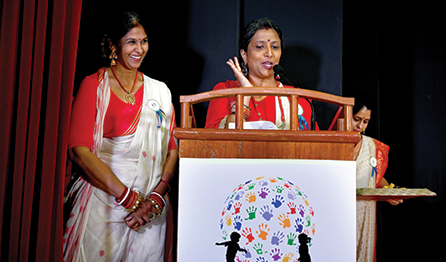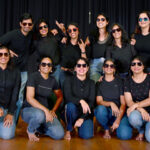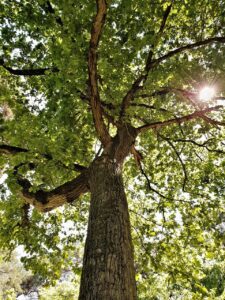
Anthea Montessori invites parents to a voluntary monthly Study Circle where we discuss a few chapters from books relevant to parenting and Montessori education. We understand it may not be possible for all parents to attend, so we thought we’d begin summarizing the minutes.
Nine parents, including one new entrant to the Study Circle, met on 28th August to discuss chapters 4-9 from the book Creative Development in the Child, Vol 1. We briefly discussed the need for more new parents to hear ideas like the ones discussed in the book – possibly at the pregnancy stage itself, so that they are truly prepared for having a child.
Per the format decided at the previous meeting, each person in the room shared one point which stood out for them in each chapter. Here are some highlights from chapters 4-6, most are direct quotes from the chapters.
Chapter 4: On sensitive periods and the need for order
• During these sensitive periods, we see an ardent love, a violent attraction to something, in the young one. There is no indifference.
• The sensitive periods help the child acquire a characteristic function of the species, and when this function has been acquired, then indifference comes, and the sensitive period for that special thing passes.
• In order to find orientation in the external environment, we must start from something which is fixed. We as adults try to give variety in form and colour. However, for the young child, that which is constant, fixed in the same place, gives great comfort – it allows their mind to rest. Order, with things in their appropriate place and sequence, help orient the child.
• The need to see things at the same place at this age is not an aesthetic need, it is a real need, and crying is the expression of either a need, or something that irritates the child.
• It is the child who creates the adult. All the movements we accomplish, which seem natural to us, are a result of the construction of the child we were once.
Chapter 5: The important work of self-construction
• In his mother’s womb… all alone, he builds up the organs which will make him a living man one day. After birth, the child becomes almost a spiritual embryo. He carries on this work of construction; he builds up the power of human intelligence and the soul of the man in the physical body.
• In order to carry out his work of construction, the child needs an environment from which he can take what he needs. This environment…also includes adults.
• You must think of the child as a studious person. He is a student of the world. You must also think of the child as someone who is always making the greatest effort of which he is capable… Think of the satisfaction the little child has when he has accomplished an action; a very real satisfaction.
• It is necessary for the child to do things for himself. By substituting himself for the child in all the acts the child wants to perform, the adult… becomes a great obstacle to the evolution of the child. If for example I want to play the piano, it is I who must work. If anybody else does it, it is that person who acquires the capacity.
• The difficulty with the adult is that he feels irritated when the child is trying to perform an action which he thinks unnecessary. (She) feels this way, only because her own mentality is so different from the child’s.
• As compared to an adult, the child’s methods of performing actions are painfully slow. The one thing we cannot do is renounce our rhythm to give space to the child, to let him do things slowly and painfully as is his nature to do, according to his own rhythm.
Chapter 6: Watching the child’s intelligence evolve
• The child’s intelligence evolves and changes with age. The adult fixes his attention on a whole, while the child fixes his attention on sensorial details.
• On one side is the adult who feels the greatness of things, who tries to make the child enjoy a part of what he feels, and on the other side is the child, who very positively looks for, and finds small details. So often the child and the adult misunderstand each other. Very likely, it is a mutual kind of underestimation. The child has no great faith in the intelligence of the adult.
• The child is interested in everything visible in his first year of life. In the first year, all that is visible has been exhausted. So the second year… the individual becomes interested in those things which are almost invisible. To discover things, that is what interests the child.
• Certainly there is beauty among the flowers, the birds… but these things were old, and could not arouse enthusiasm like something new, however small. … To seek out the new, this is the nature of man…. We must learn to distinguish between the child who is merely content and satisfied, and the child who is enthusiastic.
• We can put within reach of children, artistic things expressing culture and religion, without doing any harm to the child’s mental growth, because he will only take in that which interests him, and is within his reach.
• We must be persuaded that we are humble people who cannot do anything but witness this enormous capacity for self-development in the child. The teacher must realize that within the child there is a powerful energy… which has nothing to do with the adult.
For those who’d like to join us, we meet on the last Wednesday of the month, from 3-4pm. We are currently reading Creative Development of the Child Vol 1 in conjunction with Liberated Parents, Liberated Children. Please contact Center Head if you’d like to know about specific chapters.








No comment yet, add your voice below!